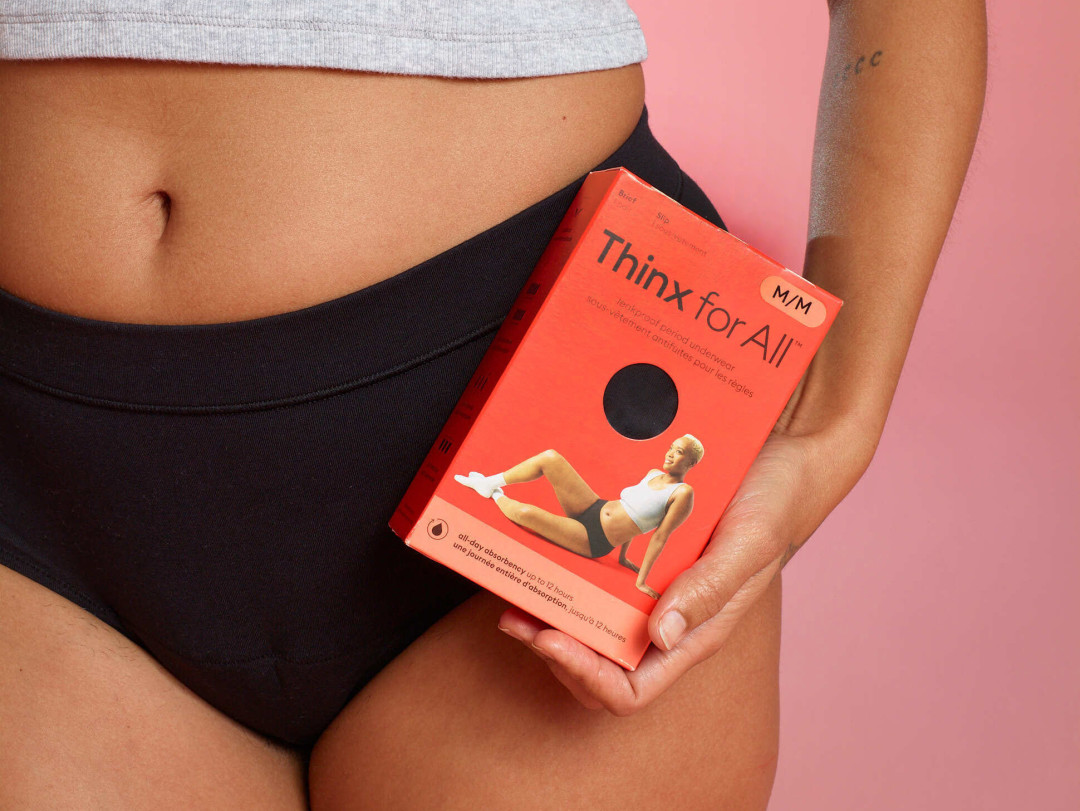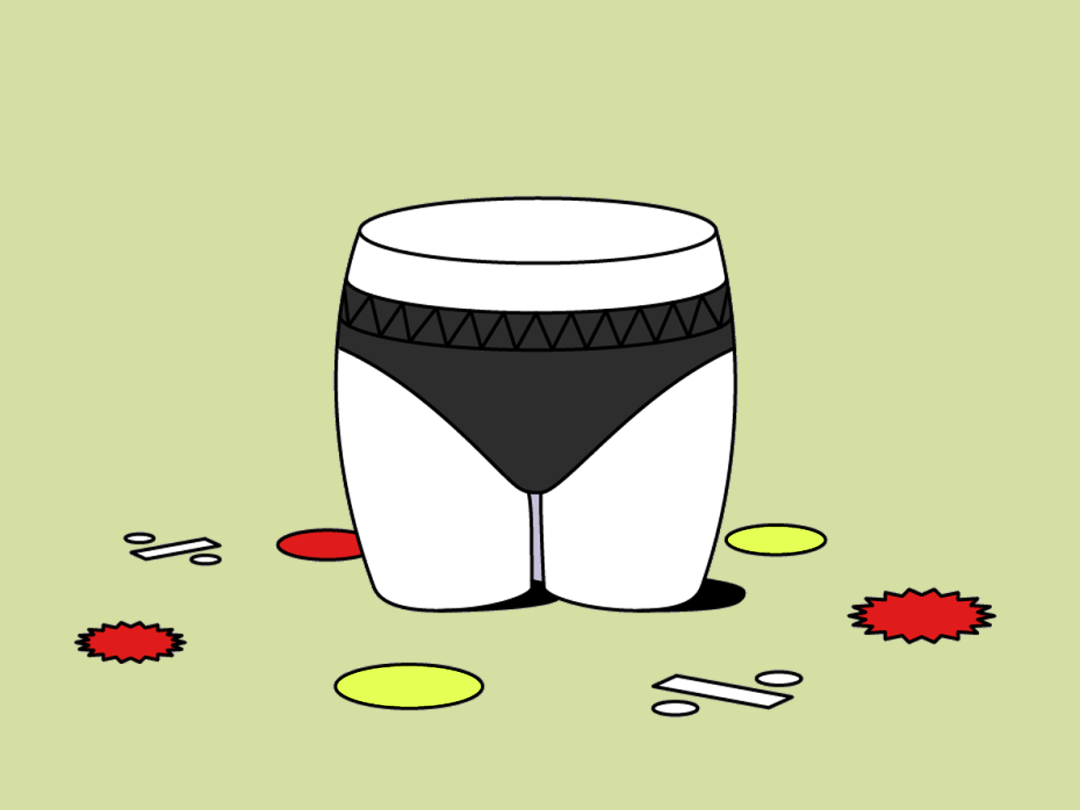#explainer
Period Products Through the Ages
odds & ends
·5 min read

by Toni Brannagan | 03/14/2018
If you feel like there haven’t been *that* many innovations in the world of menstrual products, well… you’re actually kind of right. While there have been modifications made to the handful of options we get to choose from during our time of the month, for the most part, the number of options available has stayed relatively stagnant. Menstruation is *still* a stigmatized subject, and a common thread throughout the history of period products is that it’s pretty hard to sell things that no one wants to talk about.
Ancient Bleeders
There isn’t a whole lot of information about how early civilizations handled menstruation. Scribes, who were mostly men, didn’t really write about periods ¯\_(ツ)_/¯. Also, women tended to menstruate much less — they started their flows later in their teens, spent more time pregnant (or breastfeeding) and thus not bleeding, hit menopause earlier, and, unfortunately, died earlier. Basically, it seemed like they had bigger problems to worry about than a li’l period blood (here, here, sisters), and they used whatever was lying around to MacGyver stuff into pads. Ancient Egyptians, specifically, were known to make tampons out of softened papyrus.
I bet you’re not surprised to learn that the Middle Ages was also not a super-period friendly era. Besides that, I learned that a medieval solution for heavy periods was tying the ashes of a burnt toad near your vagina. Let me repeat that for effect, people: ASHES OF A BURNT TOAD NEAR YOUR VAGINA. I’m assuming it didn’t work very well, but I still have soooo many questions (and also pretty open to trying anything).
One of the oldest period products on record is actually still one used today: the sponge. Nope, not that gross thing behind your sink faucet that you probably should’ve changed seven months ago, but *sea sponges*, like from the actual sea. #MermaidVibes.
Turn of the Century Period-ing
While women had been using strips of folded cloth to staunch their menstrual flow for centuries (ever heard the phrase “on the rag”?), the first commercially available sanitary napkin was Southall’s pad in 1888. Soon after, in 1896, Johnson & Johnson released Lister’s Towels. You’d think that mass-produced disposable pads would be a hit with people resorting to homemade methods, but due to modest turn-of-the-century sensibilities, the vague ads had a very limited reach. Menstruation was still too taboo of a subject for the product to sell, and it was pulled from the market.
The peeps over at Kotex tried again in 1920, with new and improved pads made with innovations discovered by French nurses during World War I. They found that cellulose, a cotton-acrylic blend, which they used for bandages, absorbed blood waaay better than plain ole’ cotton. Kotex’s big Don Draper-level idea was to showcase nurses in their ads for period products, and department stores put boxes out on their counters so that they could be purchased without anyone having to talk about it. Lawd forbid.
Unsurprisingly, tampons were just as difficult to sell to a market dead-set against discussing menstruation. If you have, like, 10 minutes, read this super-detailed history of the tampon, but we’ll give you the bullet points if you don’t: The first commercial tampon was introduced in the mid-1930s, and the backlash was swift. People were not about the idea of women touching themselves in any way (*eye roll*), and were convinced that tampons could break a virgin’s hymen (*double eye roll*). Somehow, the tampon prevailed.
In the same decade, in 1937, actress Leona Chalmers invented the menstrual cup — and if you remember the hissy fits people threw over girls putting in tampons, it should not come as a shock that this did not fly with many audiences. Like today, some bleeders were just not down to regularly deal with the blood that collects in a cup. However, the menstrual cup has maintained a small but loyal following through the years.
Post-War Flow
Between the pad, the tampon, and the menstrual cup, if you can’t think of many more period products of yore, that’s because there weren’t any others. Up until the 21st century, there have been a *few* itty bitty innovations to improve upon existing period products, but that’s about it.
Adhesive on the back of pads so they could stick onto your underwear wasn’t even implemented until the ‘70s. If you’re wondering what in the world people did to keep their pads in place beforehand, meet the sanitary belt, which held pads in place with, well, a belt. The sanitary belt was invented by a total badass you’ve probably never heard of, Mary Beatrice Davidson Kenner, who patented the belt in 1956. The first company who showed interest in her invention unfortunately changed their minds when they found out she was a black woman (*allllll the eye rolls*). While she went on to create many more useful inventions, her belt is hardly ever credited to her today.
In 1975, Proctor & Gamble introduced a new, innovative tampon called Rely. It was made of a bunch of synthetic materials I can’t pronounce, but point being, it was supposed to be super-absorbent and could apparently be worn for an entire period (yikes). If that sounds too good to be true, that’s because it was. Rely was pulled off of shelves by 1980 after 812 reported cases of toxic shock syndrome (was anyone else’s mother *constantly* reminding them to keep track of how long their tampons had been in?).
Modern Menstruators
Jump to 2013 (that’s a pretty long way from the menstrual cup in 1937, amirite?), when Thinx was invented. Ultra-thin, super-absorbent, bacteria-fighting, and leak-resistant, our period underwear, with its patented technology, was the first “new” menstrual care product to hit the market in nearly 80 freakin’ years.
And unlike, oh, say, nearly every menstrual hygiene company before it, Thinx was created by women who know what it’s like to deal with periods — goodbye butterfly packaging and running-through-fields advertising. We also know that not everyone who gets a period is a woman. #Facts.
But for as far as period products have come, menstruation is still stigmatized in many parts of the world. Period education, access, and innovation throughout developed countries has improved significantly in the last century, but there’s still a long way to go. If there’s one thing you can take away from this li’l history lesson, it’s that refusing to discuss something half the world goes through is not a good look. We owe it to ourselves (and all the bleeders who came before and will come after us!) to have open, honest conversations about our bodies and what we need to take care of them.
Are there any period product innovations you think I’ve missed? Any dream products you wish you could create? Drop some ideas down below!
Toni Brannagan is a writer and was the former Copy and Content Manager at Thinx.
by Toni Brannagan


